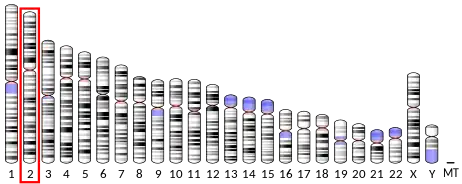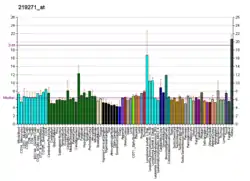| GALNT14 | |||||||||||||||||||||||||||||||||||||||||||||||||||
|---|---|---|---|---|---|---|---|---|---|---|---|---|---|---|---|---|---|---|---|---|---|---|---|---|---|---|---|---|---|---|---|---|---|---|---|---|---|---|---|---|---|---|---|---|---|---|---|---|---|---|---|
| Identifiers | |||||||||||||||||||||||||||||||||||||||||||||||||||
| Aliases | GALNT14, GALNT15, GalNac-T10, GalNac-T14, polypeptide N-acetylgalactosaminyltransferase 14 | ||||||||||||||||||||||||||||||||||||||||||||||||||
| External IDs | OMIM: 608225 MGI: 1918935 HomoloGene: 56997 GeneCards: GALNT14 | ||||||||||||||||||||||||||||||||||||||||||||||||||
| |||||||||||||||||||||||||||||||||||||||||||||||||||
| |||||||||||||||||||||||||||||||||||||||||||||||||||
| |||||||||||||||||||||||||||||||||||||||||||||||||||
| |||||||||||||||||||||||||||||||||||||||||||||||||||
| Wikidata | |||||||||||||||||||||||||||||||||||||||||||||||||||
| |||||||||||||||||||||||||||||||||||||||||||||||||||
Polypeptide N-acetylgalactosaminyltransferase 14 is an enzyme that in humans is encoded by the GALNT14 gene.[4][5]
GALNT14 (EC 2.4.1.41) belongs to a large subfamily of glycosyltransferases residing in the Golgi apparatus. GALNT enzymes catalyze the first step in the O-glycosylation of mammalian proteins by transferring N-acetyl-D-galactosamine (GalNAc) to peptide substrates.[supplied by OMIM][5]
SNPs on GALNT14 have been shown to be associated to the chemotherapy responses of patients with advanced hepatocellular carcinoma.[6][7][8][9]
References
- 1 2 3 GRCh38: Ensembl release 89: ENSG00000158089 - Ensembl, May 2017
- ↑ "Human PubMed Reference:". National Center for Biotechnology Information, U.S. National Library of Medicine.
- ↑ "Mouse PubMed Reference:". National Center for Biotechnology Information, U.S. National Library of Medicine.
- ↑ Wang H, Tachibana K, Zhang Y, Iwasaki H, Kameyama A, Cheng L, Guo J, Hiruma T, Togayachi A, Kudo T, Kikuchi N, Narimatsu H (Dec 2002). "Cloning and characterization of a novel UDP-GalNAc:polypeptide N-acetylgalactosaminyltransferase, pp-GalNAc-T14". Biochem Biophys Res Commun. 300 (3): 738–44. doi:10.1016/S0006-291X(02)02908-X. PMID 12507512.
- 1 2 "Entrez Gene: GALNT14 UDP-N-acetyl-alpha-D-galactosamine:polypeptide N-acetylgalactosaminyltransferase 14 (GalNAc-T14)".
- ↑ Liang KH, Lin CC, Yeh CT (Jul 2011). "GALNT14 SNP as a potential predictor of response to combination chemotherapy using 5-FU, mitoxantrone and cisplatin in advanced HCC". Pharmacogenomics. 12 (7): 1061–73. doi:10.2217/pgs.11.43. PMID 21635146.
- ↑ Yeh CT, Liang KH, Lin CC, Chang ML, Hsu CL, Hung CF (Mar 2014). "A single nucleotide polymorphism on the GALNT14 gene as an effective predictor of response to chemotherapy in advanced hepatocellular carcinoma". Int J Cancer. 134 (5): 1214–1224. doi:10.1002/ijc.28439. PMID 23959947. S2CID 1262943.
- ↑ Liang KH, Yang PC, Yeh CT (Nov 2014). "Genotyping the GALNT14 gene by joint analysis of two linked single nucleotide polymorphisms using liver tissues for clinical and geographical comparisons". Oncol Lett. 8 (5): 2215–2220. doi:10.3892/ol.2014.2507. PMC 4186602. PMID 25295111.
- ↑ Lin WR, Hsu CW, Chen YC, Chang ML, Liang KH, Huang YH, Yeh CT (Jul 2014). "GALNT14 genotype, α-fetoprotein and therapeutic side effects predict post-chemotherapy survival in patients with advanced hepatocellular carcinoma". Mol Clin Oncol. 2 (4): 630–640. doi:10.3892/mco.2014.294. PMC 4051573. PMID 24940508.
Further reading
- Wu C, Yao G, Zou M, et al. (2007). "N-Acetylgalactosaminyltransferase 14, a novel insulin-like growth factor binding protein-3 binding partner". Biochem. Biophys. Res. Commun. 357 (2): 360–5. doi:10.1016/j.bbrc.2007.03.153. PMID 17434446.
- Gerhard DS, Wagner L, Feingold EA, et al. (2004). "The status, quality, and expansion of the NIH full-length cDNA project: the Mammalian Gene Collection (MGC)". Genome Res. 14 (10B): 2121–7. doi:10.1101/gr.2596504. PMC 528928. PMID 15489334.
- Ota T, Suzuki Y, Nishikawa T, et al. (2004). "Complete sequencing and characterization of 21,243 full-length human cDNAs". Nat. Genet. 36 (1): 40–5. doi:10.1038/ng1285. PMID 14702039.
- Clark HF, Gurney AL, Abaya E, et al. (2003). "The secreted protein discovery initiative (SPDI), a large-scale effort to identify novel human secreted and transmembrane proteins: a bioinformatics assessment". Genome Res. 13 (10): 2265–70. doi:10.1101/gr.1293003. PMC 403697. PMID 12975309.
- Strausberg RL, Feingold EA, Grouse LH, et al. (2003). "Generation and initial analysis of more than 15,000 full-length human and mouse cDNA sequences". Proc. Natl. Acad. Sci. U.S.A. 99 (26): 16899–903. Bibcode:2002PNAS...9916899M. doi:10.1073/pnas.242603899. PMC 139241. PMID 12477932.
- Suzuki Y, Yoshitomo-Nakagawa K, Maruyama K, et al. (1997). "Construction and characterization of a full length-enriched and a 5'-end-enriched cDNA library". Gene. 200 (1–2): 149–56. doi:10.1016/S0378-1119(97)00411-3. PMID 9373149.
- Maruyama K, Sugano S (1994). "Oligo-capping: a simple method to replace the cap structure of eukaryotic mRNAs with oligoribonucleotides". Gene. 138 (1–2): 171–4. doi:10.1016/0378-1119(94)90802-8. PMID 8125298.
This article is issued from Wikipedia. The text is licensed under Creative Commons - Attribution - Sharealike. Additional terms may apply for the media files.


